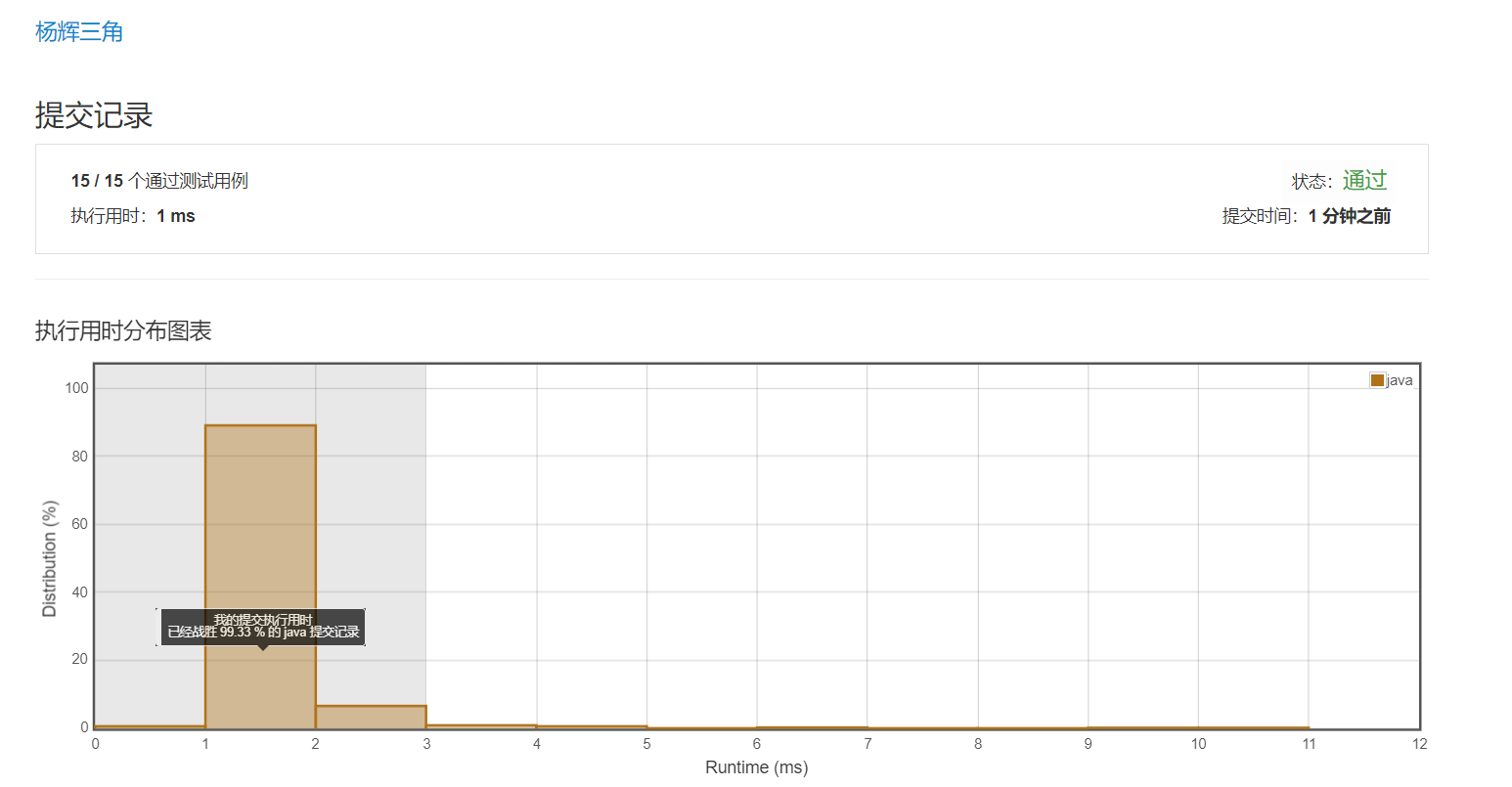List<Integer> temp = new ArrayList<>(); temp.add(1); //此时是[1] result.add(temp); if(numRows==1) return result; temp.add(1); //此时是[1,1] result.add(temp); if(numRows==2) return result;
我以为在2行的时候,这样就返回[[1],[1,1]]了。
但是结果是这样的

数组不是把temp值存进去,而是存temp引用的对象。所以说更像一个指针。
temp的值改了之后,所有和tmp指向同一个地方的都会被改。
改成这样即可
List<Integer> temp = new ArrayList<>(); temp.add(1); result.add(temp); if(numRows==1) return result; //从新给temp分配内存 temp = new ArrayList<>(); temp.add(1); temp.add(1); result.add(temp); if(numRows==2) return result;
因为第一个temp指向的内存区域,被数组[0]指向了,所以不会被回收。
temp只是一个变量,给他新的内存区域,再操作即可。
其余的还挺简单的,每一行在index位置的数字就是上一行的index-1 和 index 数字之和。
每行的开头和末尾都是1,只要处理中间部分即可。

public static List<List<Integer>> generate(int numRows) { //0行返回什么? //设置好第一行,后续的自动生成即可 List<List<Integer>> result = new ArrayList<>(); if (numRows==0) return result; List<Integer> temp = new ArrayList<>(); temp.add(1); result.add(temp); if(numRows==1) return result; temp = new ArrayList<>(); temp.add(1); temp.add(1); result.add(temp); if(numRows==2) return result; //从第三行开始即可 for(int i=2;i<numRows;i++){ //构造每一行,第n行的个数是n,第一个和最后一个数字都是1 List<Integer> current = new ArrayList<>(); //头 current.add(1); List<Integer> last = result.get(i-1); //中间就是j-1,j两个位置 //第i行的个数是i+1个,因为i是比行数少一的 for(int j=1;j<i;j++){ current.add(last.get(j-1)+last.get(j)); } //尾 current.add(1); result.add(current); } return result; }